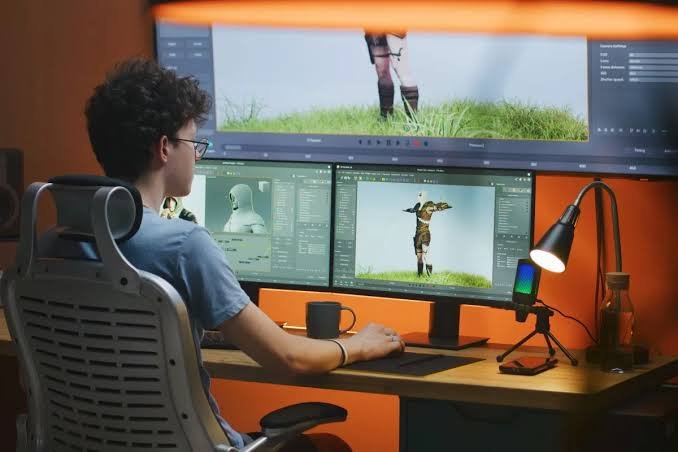If you’re diving into the world of Source Filmmaker (SFM), one technical term you’ll quickly come across is SFMCompile. It’s the unsung hero behind bringing custom models, textures, and animations into your SFM projects. Whether you’re crafting cinematic sequences, game-inspired storytelling, or even contributing to the adult animation niche, mastering the SFM compile process will elevate your production quality and efficiency.
In this comprehensive guide, we’ll explore what SFMCompile is, why it matters, and how to use it effectively—with tools, tips, and fixes to ensure your workflow is smooth and professional.
Table of Contents
What is SFMCompile?
SFMCompile refers to the process of transforming 3D models, textures, animations, and scripts into usable formats for Source Filmmaker using Valve’s compilation tools. This involves creating a .QC file, exporting the model in a supported format (like .SMD or .DMX), and using tools like Crowbar or studiomdl.exe to compile those files into a .MDL (model) format that SFM can read.
Without this step, no matter how beautiful your model is, it won’t show up or function in SFM.
Why SFM Compile Matters
Here’s why the SFMCompile process is essential:
-
Functionality: Assets must be compiled to be recognized in SFM.
-
Optimization: Properly compiled models load faster and are less likely to crash.
-
Customization: Allows you to integrate animations, physics, and textures tailored to your project.
-
Cross-Platform Use: Compiled assets can be shared and reused by other animators or within the modding community.
Many of the top creators on platforms like SFM Compile Club rely on advanced compiling techniques to bring high-quality content to life.
Setting Up Your Compile Environment
Before you compile, you’ll need the right tools and directory setup.
Required Tools:
| Tool | Purpose | Download Link |
|---|---|---|
| Crowbar | GUI compiler/decompiler for models | Crowbar GitHub |
| Blender | 3D modeling software with SMD/DMX support | Blender.org |
| VTFEdit | Convert and preview Valve texture formats | VTFEdit |
| Notepad++ | Edit QC and script files easily | Notepad++ |
Folder Structure Example:
MyModel/
├── ModelFiles/
│ ├── reference.smd
│ ├── idle.smd
│ └── walk.smd
├── Textures/
│ ├── body.vtf
│ ├── body.vmt
├── QCFiles/
│ └── mymodel.qcStep-by-Step Compilation Workflow
1. Model in Blender or 3DS Max
-
Finish your 3D character or object.
-
Apply textures and rig the skeleton.
-
Export to
.SMDor.DMX.
2. Create the QC File
The QC file acts as your compile blueprint.
Example:
$modelname "characters/hero.mdl"
$body mybody "reference.smd"
$sequence idle "idle.smd" fps 30
$sequence walk "walk.smd" fps 30
$cdmaterials "models/hero"
$collisionmodel "physics.smd"
3. Compile Using Crowbar
-
Open Crowbar.
-
Load your QC file.
-
Click Compile.
-
Verify output in the game directory (usually
Steam\steamapps\common\SourceFilmmaker\game\usermod\models).
4. Load in SFM
Open SFM, right-click in the animation set editor, and choose Create Animation Set for New Model. Your compiled model should now be available.
Using Crowbar and QC Files
Crowbar simplifies the whole process with a GUI interface. Some tips:
-
Use Output Log to debug errors.
-
Always check the Model Output Folder path.
-
Enable Post-Compile Launch to auto-load models into SFM.
Best Practices for Compiling
-
Name Your Files Consistently: Avoid spaces or special characters.
-
Use Low-Poly Collisions: Don’t use high-detail meshes for collision.
-
Group Your Animations: Compile multiple sequences in one QC.
-
Comment Your QC Files:
qc// This defines the idle animation
$sequence idle "idle.smd" fps 30
Common Errors and How to Fix Them
| Error | Cause | Solution |
|---|---|---|
| Too many bones | Model exceeds bone limit | Simplify rig |
| Missing texture | Bad VMT path or missing VTF | Check $cdmaterials and VMT paths |
| No model in SFM | Failed compilation or wrong path | Recheck QC and Crowbar output directory |
| QC syntax error | Improper QC formatting | Use Notepad++ with QC syntax highlighter |
Advanced SFM Compile Techniques
1. Batch Compiling Multiple Models
You can compile models in bulk using a .bat file:
@echo off
start crowbar.exe -compile "C:\MyModels\hero.qc"
start crowbar.exe -compile "C:\MyModels\villain.qc"
2. LOD (Level of Detail) Settings
Reduce resource load by adding LODs:
$lod 50
{
replacemodel "reference.smd" "lod1.smd"
}
3. Physics and Jiggle Bones
Add realism by integrating:
-
$collisionmodelfor hitboxes -
$jigglebonefor soft body movement -
$eyeballand$flexfor facial expressions
For creators working in expressive content formats like those shared at SFM Compile Club, these details make a massive difference.
Community Resources and Support
If you’re stuck, the community is your best resource. Join these places:
-
SFMCompile.club – A hub for assets, guides, and tutorials.
-
Steam SFM Forums – Ask questions and share tips.
-
Blender Source Tools GitHub – For plugin updates and fixes.
-
Reddit r/SFM – A large, helpful community.
Conclusion
Mastering SFMCompile transforms your Source Filmmaker journey from basic to pro-level. It bridges the gap between design and animation, giving life to your models and scenes. From preparing your assets to fixing common errors, every part of this process opens doors to new creative possibilities.
By learning to compile correctly, you’re not just importing models—you’re unlocking control, performance, and polish that set your animations apart.
